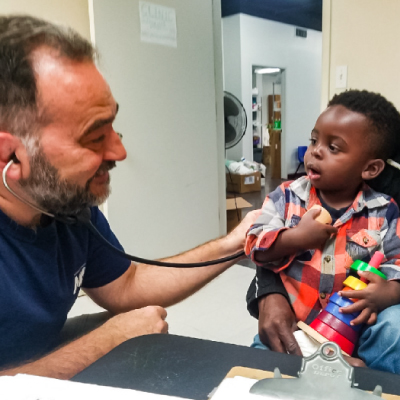- Who We Are
- Clinician Employment
- Publications
- Witness to Witness (W2W)
- El Premio Kugel & Zuroweste a la Justicia en la Salud
- Your Voice Matters: Photovoice Project
Wed, 09/11/2013 | by mpiorunski

Your patient reports stomach pain, nausea and headache. It’s nearing the heart of flu season - these are possible flu symptoms, you think. On examination, the patient doesn’t present with a fever.
“Is anyone at home sick?” you ask.
No.
“When did the symptoms begin?”
Hoy (Today).
You notice the patient appears to be dressed for work. “Where were you when the symptoms began?” you ask.
En el trabajo (At work).
At work, you think. “And what do you do for work?”
Cosecho sandia (I harvest watermelons).
Watermelons, you think. That’s it. The answer is now becoming clearer.
“Do you or does anyone else use pesticides or other chemicals at work?”
Sí. Ellos usan pesticida y la aplicaron pesticida en la mañana (Yes. They use pesticide and they sprayed it this morning.)
Upon completing the occupational history and consulting with outreach staff, you learn it was likely that your patient was exposed to a Diazinon-based organophosphate insecticide.

So now what do you do to effectively treat the exposed patient?
EPA’s updated comprehensive manual for healthcare providers on pesticide toxicology, diagnosis, and treatment helps to take the guess work out of providing effective care for the pesticide-exposed patient.
The Recognition and Management of Pesticide Poisonings, 6th Edition provides clinicians with the tools to conduct environmental and occupational exposure screenings for patients with suspected pesticide-related illnesses or injuries and to report pesticide exposures to appropriate agencies. It also provides access to the most up-to-date pesticide information and resources to make the diagnosis and follow the proper course of treatment.
Pesticides and other chemical and physical hazards are often associated with nonspecific medical complaints. This can often make it difficult to diagnose pesticide-exposed patients.
“If a patient is thought to have been exposed to a specific pesticide, the clinician can go to the specific chapter,” explains Dr. Jimmy Roberts, who co-authored the updated pesticide manual with Dr. J. Routt Reigart.
And when pesticide poisoning is suspected based on the clinical presentation, but the active ingredient has not been identified, Roberts explains, the index of signs and symptoms found in the Recognition and Management text can help clinicians identify the pesticides that cause the symptoms.
A Need for Pesticide Clinical Resources
Despite an increasing need for frontline clinicians to be prepared to respond to environmental and work related-health concerns – including pesticide exposures – the reality is that in 2013 most primary care providers receive little if any environmental and occupational health education in their training, explains MCN’s Chief Medical Officer, Dr. Ed Zuroweste.
“Publications like this can ‘fill the gap,’” Zuroweste says. “If we are to provide quality health care to the hardworking individuals who put food on all of our tables, using this text is imperative.”
The updated manual provides signs and symptoms of exposure for both adult and pediatric cases.
Candace Kugel, a certified nurse midwife and MCN’s Women’s Health Specialist, describes the updated Recognition and Management of Pesticide Poisonings as the reference related to pesticide effects for the clinical setting. Kugel recommends that clinicians become familiar with the tools and organizations outlined in the manual that can provide decision support when treating pesticide-exposed patients.
Amy K. Liebman, MCN’s Director of Environmental and Occupational Health, co-authored the chapter, “Making the Diagnosis,” along with Dr. Geoffrey Calvert. The chapter provides an overview of how to take an exposure history, along with specific information on the type of tests and samples to obtain when evaluating a patient with suspected pesticide poisoning.
Identifying farmworker patients and screening these patients to obtain their occupational and exposure history can help to raise the index of suspicion of a possible pesticide exposure.
"It is vital that we screen farmworkers for possible pesticide exposure, that we provide appropriate treatment, and that we report these exposures to the appropriate agencies in our states"- Dr. Ed Zuroweste |
New to the manual is a chapter on the chronic effects of pesticide exposures. The “Chronic Effects” chapter gives an overview of possible linkages between pesticide exposure and chronic illnesses, including cancers and behavioral disorders.
According to Dr. Roberts, the chapter is intended to give clinicians more information about pesticide exposures and their relationships to various chronic outcomes.
"It is a matter of providing increased awareness," Roberts said. "The data can serve as a powerful counseling tool, particularly for the prenatal period and for occupational exposures."
Most women working in agriculture are of reproductive age and our knowledge about the effects of pesticides on reproductive health is limited, Kugel explains.
“There is sufficient concern about birth defects, the potential for decreased fertility, and other impacts [on reproductive health] to warrant screening and education of farmworker women related to pesticide exposure,” Kugel says.
Workers and Health Program
MCN's Workers and Health program partners with health centers across the US to incorporate a focus on the recognition and management of environmental and occupational health exposures. Dr. Roberts serves as faculty for this program, training clinicians on pesticide toxicology and the treatment of pesticide exposures.
MCN’s Liebman, who directs the program, works alongside health centers incorporate guidelines and protocols to prepare clinicians to provide effective care for exposed patients. In addition, the program provides clinical and outreach staff with training and resources to help ensure high quality, culturally competent care for migrant and immigrant workers and their families.
Free hard copies of the Recognition and Management of Pesticide Poisonings, 6th Edition are available for order here, along with a complete pdf version available for download.
Visit MCN’s EOH page to learn more about our health center partnership program and other EOH initiatives. On our Pesticides page you can find clinical tools and resources related to the recognition and management of pesticide exposures.








